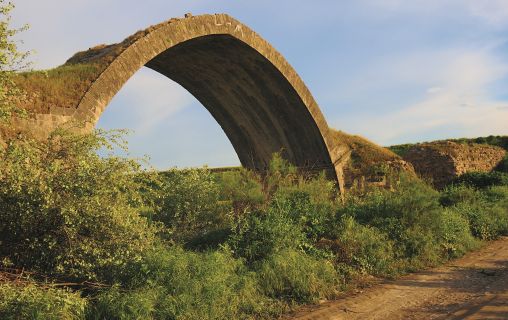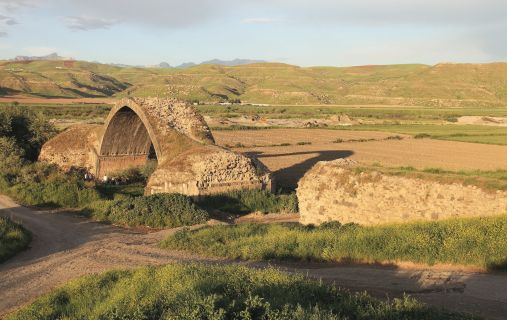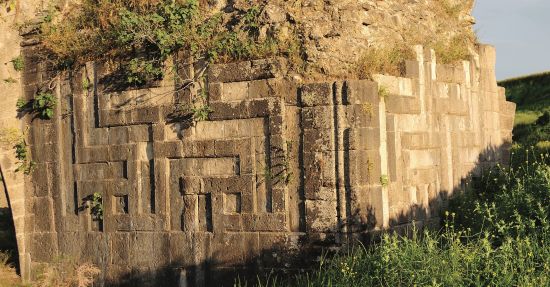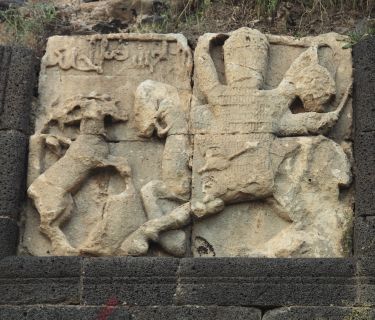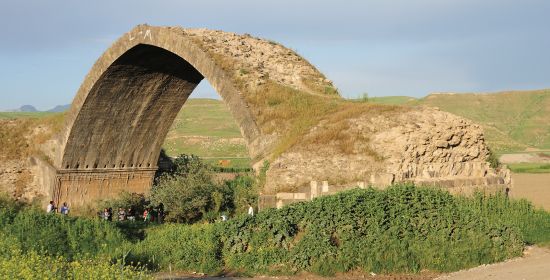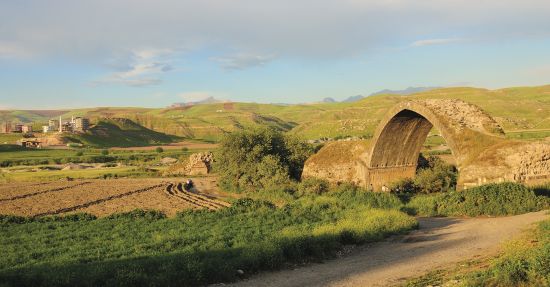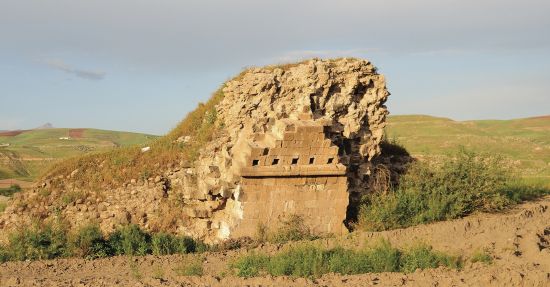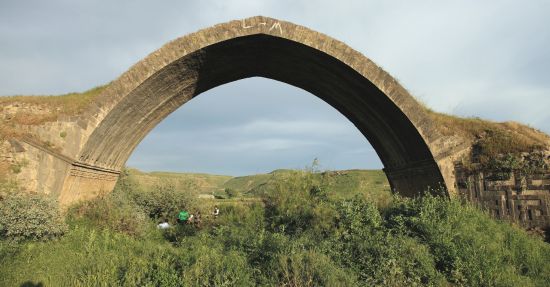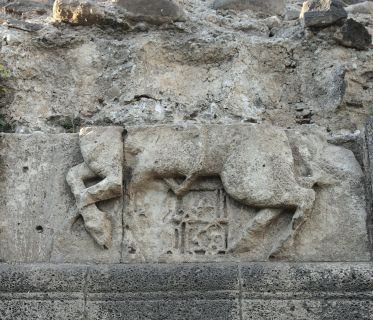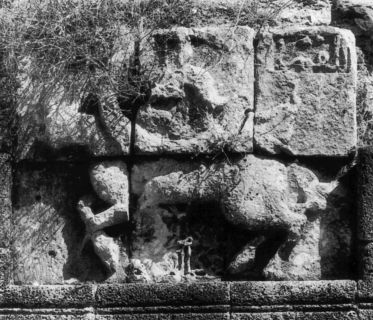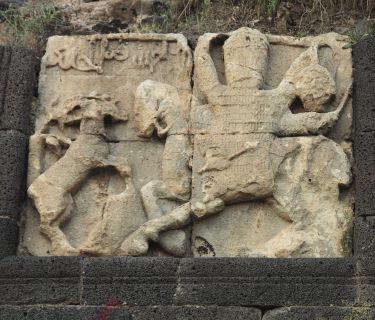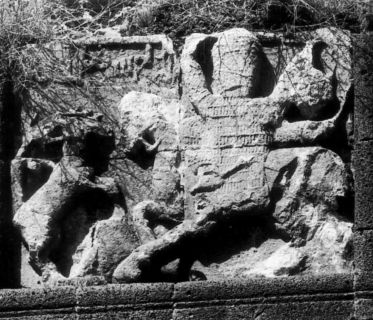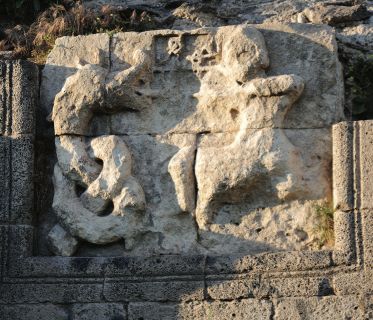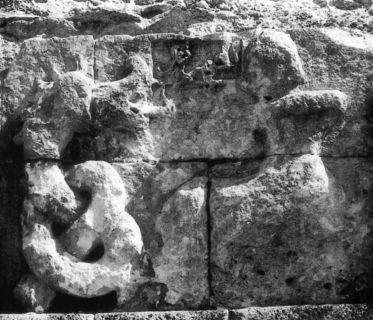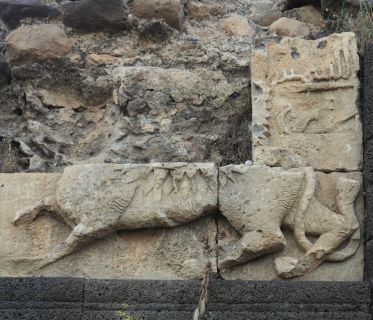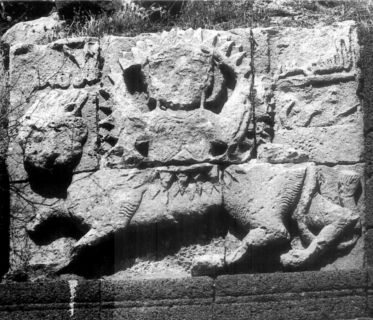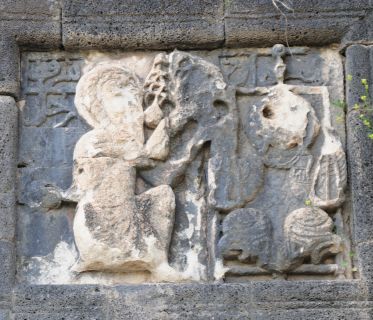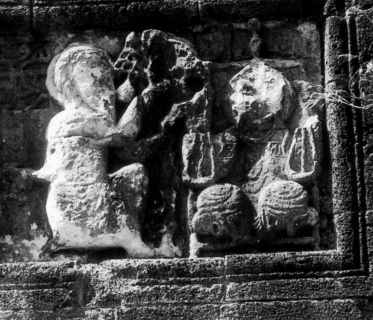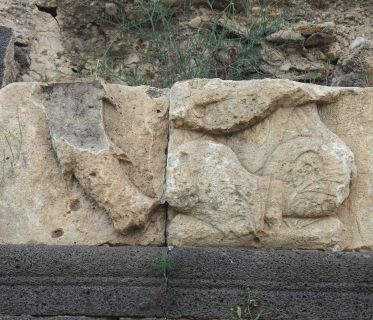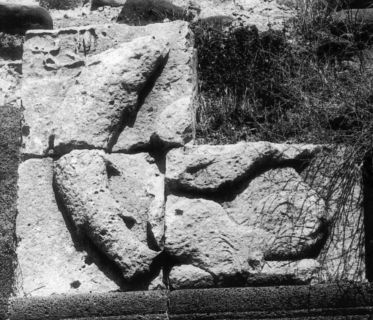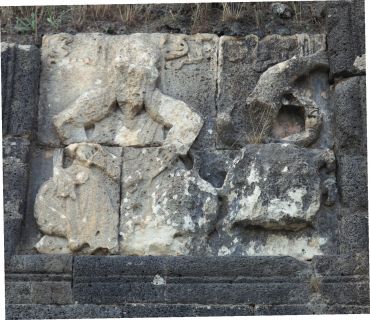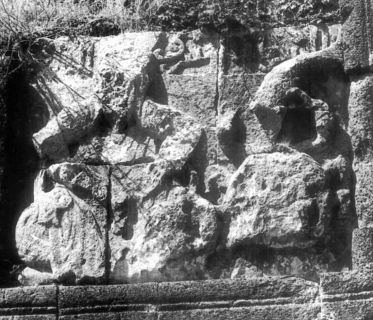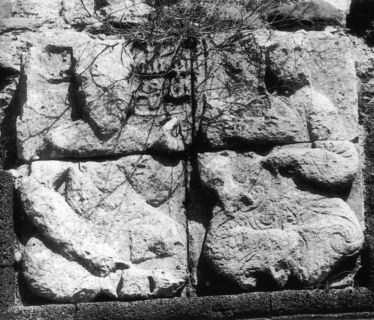Cizre Bridge
Syria Cizre 12th Century
Tigris Bridge, Dicle BridgeOlarak da bilinir.
Seljuk
The Cizre Bridge is in a ruined state. It is built from basalt. Historians from the Middle Ages and various travellers over the ages have provided information about the original form of the bridge before it was destroyed. It is stated that the bridge had five arches, with the middle arch being the largest, and that this arch was flanked by smaller arches. Researchers speculate that the bridge became damaged due to faulty construction of the abutments and because the river changed its course.
The bridge belongs to the group of vertical arched bridges. It appears to rise from the ends, as seen from the present arch spans.
Astrological figures are depicted on the bridge abutments. There are eight reliefs set inside rectangular panels. The reliefs are made of white limestone, which is different than the black basalt used in the construction of the rest of the bridge. The figures are shown in different positions and postures. The figures are believed to represent the planets and the signs of the Zodiac, judging by the attributes held in their hands. The first panel depicts Saturn and Libra together. Mars and Cancer are depicted in the second panel, and Mars and Capricorn on the third. The fourth panel shows the Sun and Leo. The fifth panel depicts Venus and Pisces, and the sixth has Mercury and Virgo sitting together. The next panel shows the moon and Taurus depicted with their attributes. The eighth panel includes Sagittarius and Gemini.
There is no inscription providing the construction date of the bridge. However, there is an inscription, dated 1164, on door of the Diyarbakir Ulu Mosque, which indicates that Cemaleddin Muhammad lsfahani, one of the viziers ofthe Zengid ruler Kutbeddin Mevdudun, commissioned a bridge on the Tigris River near Cizre. The bridge was probably built at the beginning of the 12th century, when the region was under the Seljuk rule.
Çulpan, C., Türk Taş Köprüleri, Ankara, 2002, s.4448. Gierlich, J., Mittelal1Erliche Tıerreliefs in Arıatnlien und Nordmesopotamien : Untersuchungen zur fıgürlichen Baudekoration der Seldschuken, Artuqiden und ihrer Nachfolger bis ins 15. Jahrhundert, Tübingen, 1996, s. 211-213.
Lehman-H., Armeinen einst undjetzt, 1910, s.364-365.
Sarre, F.,Herzfeld, O., Archaeologische Riese im Euphrat und Tıgris, Gebiet, 1910, s.8.
Cizre

